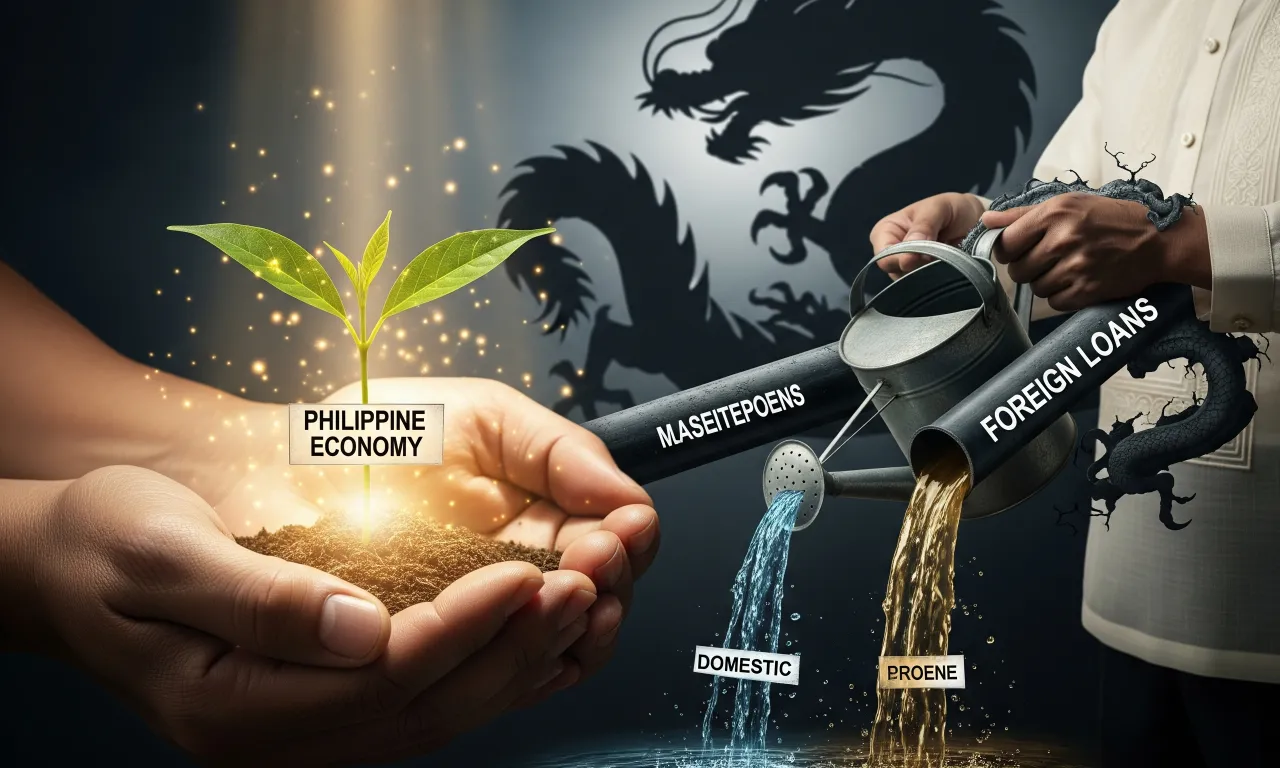Have you ever wondered what your great-great-great-great-grandparents were doing while history unfolded around them? Most of us can trace our families back only a few generations — to our grandparents or great-grandparents — but beyond that, the stories often fade into silence. Yet, if we stop to calculate, each of us carries centuries of survival, resilience, and lived experience within our blood.
When I realized that being born in 1979 places me about 14 generations removed from my ancestors in the mid-1500s, it changed how I looked at history. Suddenly, the textbook events I memorized in school weren’t just abstract timelines; they were the world my own family lived in. The Spanish conquest, World War II, Martial Law — these weren’t just “events.” They were backdrops to the lives of people whose choices and survival made me possible today.
This is my attempt to look at 14 generations of Filipino ancestors, imagining their lives alongside the history of the Philippines. While I can’t know their exact names or stories, this is a way of honoring them — and by extension, the millions of Filipinos who lived, struggled, and thrived through the centuries.
📜 A Living Timeline of 14 Generations
Below is a generational snapshot — the estimated years they were born, what the Philippines was like when they were growing up, and the historical milestones that shaped their world.
| Generation | Born | Growing Up (Age 10–20) | What They Lived Through |
|---|---|---|---|
| Me | 1979 | 1989–1999 | 📺 Post-EDSA democracy under Cory Aquino → Ramos era (’92–’98). Rise of internet, anime, grunge, Mt. Pinatubo (1991), OFW boom. |
| Father | 1955 | 1965–1975 | 👨✈️ Marcos begins presidency (1965); Martial Law (1972); student protests, hippie influence, first color TVs. |
| Grandfather | 1928 | 1938–1948 | 💣 WWII hits PH (1941–45); Japanese occupation; Liberation of Manila; PH Independence from US (1946). |
| Great-grandfather | 1900 | 1910–1920 | 🇺🇸 US public schools begin; English taught; roads & bridges built; WWI (1914–18); rise of American colonial life. |
| 2nd Great-grandfather | 1873 | 1883–1893 | 📚 Ilustrado movement grows; Rizal travels to Europe; Spanish Catholic power still strong; unrest brewing. |
| 3rd Great-grandfather | 1845 | 1855–1865 | ⛪ Strong Spanish religious rule; revolts simmer; railroads & telegraph coming soon. |
| 4th Great-grandfather | 1818 | 1828–1838 | 💂 Spanish tighten control; early discontent grows; Manila Galleon trade ends (1815); colonial reforms begin. |
| 5th Great-grandfather | 1792 | 1802–1812 | ⚓ Final years of Galleon Trade; Napoleonic Wars shake the empire; Catholic missions expand inland. |
| 6th Great-grandfather | 1764 | 1774–1784 | ⚔ British briefly occupy Manila (1762–64); Spanish strengthen rule; uprisings and reorganized agriculture. |
| 7th Great-grandfather | 1735 | 1745–1755 | 👑 Bourbon Reforms from Spain; forced labor increases; resentment builds among locals. |
| 8th Great-grandfather | 1708 | 1718–1728 | ⛪ Life centered around the church; education rare for natives; society mostly rural and agricultural. |
| 9th Great-grandfather | 1683 | 1693–1703 | 💥 Moro raids continue; Spanish reprisals; Chinese traders thrive in Manila; towns built around churches. |
| 10th Great-grandfather | 1657 | 1667–1677 | 🏰 Forts and churches dominate; epidemics and disasters; native labor heavily exploited. |
| 11th Great-grandfather | 1630 | 1640–1650 | 🌋 Taal erupts (1641); Sangley (Chinese) massacre fallout; large-scale Christianization continues. |
| 12th Great-grandfather | 1603 | 1613–1623 | 🔥 Manila expands inside Intramuros; native Filipinos taxed and uneducated; resistance sparks. |
| 13th Great-grandfather | 1578 | 1588–1598 | ⚔️ Spanish conquest ongoing; resistance in Mindanao and mountains; missionaries expand inland. |
| 14th Great-grandfather | 1552 | 1562–1572 | 🛶 Pre-Hispanic barangays still thrive; Rajahs rule Manila and Cebu; Legazpi arrives in 1565, conquers Manila in 1571. |
🌾 What Life Might Have Looked Like
While the table gives us history in snapshots, imagining the everyday lives of these ancestors brings history closer to home.
- Pre-colonial ancestors (1500s): Likely farmers, fisherfolk, or traders in barangays led by datus and rajahs. They lived in bamboo houses, ate rice and root crops, and practiced animist beliefs blended with Islam in some parts of the islands.
- Spanish era ancestors (1600s–1800s): Forced to pay tributes (buwis) and do polo y servicio (forced labor). Attended mass regularly, while fiestas became central to town life. Some learned basic Spanish or Latin through friars; most remained tied to agriculture.
- Revolutionary period ancestors (late 1800s): Witnessed the stirrings of nationalism through Rizal and the ilustrados. Some may have joined the Katipunan, others simply struggled with the burdens of colonial taxation and land tenancy.
- American period ancestors (1900s): Saw the introduction of public schools, English, baseball, and modern roads. Their children suddenly grew up in classrooms with American teachers and textbooks.
- WWII ancestors (1940s): Lived through fear, hunger, and Japanese occupation. Survival meant growing your own food, hiding from soldiers, and witnessing destruction during the Battle of Manila.
- Martial Law & EDSA ancestors (1970s–80s): Some joined protests, others kept their heads down. Families were split as many became OFWs during the Marcos years. The TV and radio became windows to the world.
Each generation lived through upheaval, yet passed on resilience, faith, and traditions that remain in Filipino families today.
📌 FAQs About Filipino Ancestry
How many generations fit in 500 years?
Roughly 20 generations, assuming 25 years per generation. This article traces about 14 generations from the mid-1500s to today.
What language did my ancestors speak?
Before Spanish colonization, most Filipinos spoke local dialects like Tagalog, Cebuano, Ilocano, or Tausug. Spanish and Chavacano influenced later generations, while English became widespread under the Americans.
How can I trace my Filipino family tree?
Start with family records, baptismal and marriage certificates, and local parish archives. Older barangay records or even oral histories from elders are valuable.
Did ordinary Filipinos join the revolution?
Many did, especially through the Katipunan, but most lived as farmers or laborers who simply endured colonial rule.
What foods did they eat centuries ago?
Rice, root crops, fish, coconuts, and seasonal fruits. Spanish colonization introduced new ingredients like tomatoes and potatoes, while Americans later added canned goods and bread.
❤️ Reflection: Why This Matters
Looking back through 14 generations isn’t just a historical exercise. It’s a reminder that our very existence is built on the survival of those who came before us. Each ancestor lived through wars, colonization, revolts, and hardships — yet they endured. Their survival is our inheritance.
For me, it’s humbling to realize that I am the product of resilience stretching back nearly 500 years. History isn’t just about Rizal, Aguinaldo, or Marcos; it’s about unnamed farmers, mothers, fishermen, and laborers — people like my ancestors, and yours too. We may not know their names, but their strength lives on in us.
To honor them is to live fully today, to cherish family, and to remember: we are living chapters in a much longer Filipino story.




